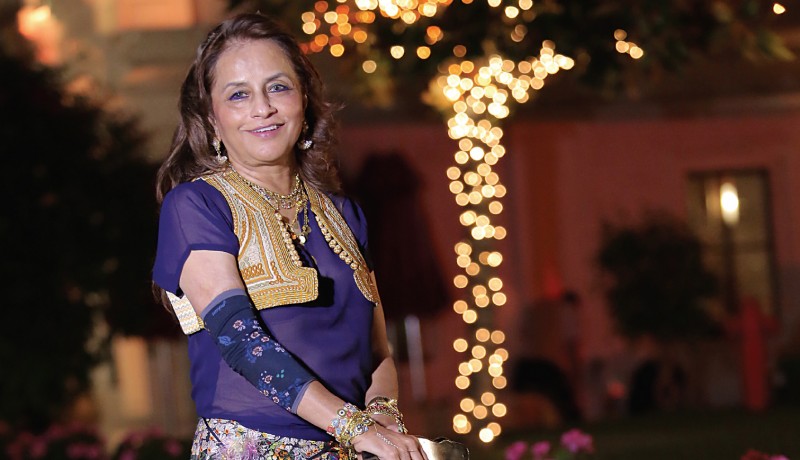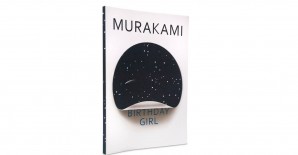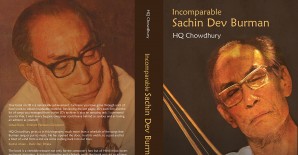
Etcetera

“Age has nothing to do with anything”.
As designers go, Bina Modi appears to the manner born, impossibly chic in her exquisitely embroidered blouse, printed skirt and arms stacked with bracelets, surrounded by racks of glamorous clothes in her boutique-office-warehouse in an industrial area in South Delhi. What is unexpected, though, is the steel to her silk, the flash of the eye and determined set of her chin as she tells you her story—how a woman from a conservative family where women don’t work, who married industrialist K K Modi at the age of 16, chose to reinvent herself at midlife, knowing that she “needed to do something”. Today, the 71 year-old (impossible to believe when you see her) is an entrepreneur in her own right; her ventures include the Ego chain of restaurants, a salon and, of course, Bina’s, her designer label that seamlessly melds traditional craftsmanship with a global aesthetic. And, no, it was not handed to her on a platter. Whether it was taking a ₹ 700,000 bank loan (“the Modi name helped, although the manager wondered why I needed a loan!”) or waiting tables till 2 am at her first restaurant to iron out teething troubles, she has gone it alone, proving to her husband, her family, and herself that she could. Very much a working woman—she’s at her office Monday to Saturday when not travelling—her approach to style is simple: “I dress for the day. You will rarely catch me at a moment when I’m not ready for any occasion—whether it is a meeting, lunch, dinner or an event. I would go like this.”
IN HER WORDS
Women have been my biggest inspiration and my focus has been to empower them. Most of my karigar [artisans] are women. I train them, look after them, and encourage them to put half their salaries in the bank so no one can take their money away. I employ over 3,000 people.
As a designer, I consider it my job to make women feel confident. I have an 80 year-old client from America—her husband works in Hollywood—who says she feels 10-ft tall when she wears my clothes. She says she can wear them to a casual dinner or even to the Oscars! Another client with cancer came to me; she was very ill but she spent two hours here, tried different silhouettes and bought many clothes. “Your clothes make me feel good,” she said. That’s what makes me keep doing this—it’s how good you can make a woman feel.
I design for a discerning woman who knows what she wants; our pieces are timeless. I still wear clothes I made 10 years ago and so do my clients. I have clients whose daughters are eight to 10 years old; they say they are buying for their trousseaux! My clothes are collectables because of the quality of workmanship; everything we make is hand-embroidered. I don’t take part in fashion shows or advertise; people hear about my clothes from others and they come.
I stand by my product 100 per cent. We sample everything in-house before we give it to the karigar to ensure that the colours, design…everything is right. And we service the customer for years afterwards. For example, a woman came in with 10 pieces five years after she bought them; they didn’t fit her anymore. We opened them up, did embroidery where required, fixed them up. At the end of the day, you must have a happy customer.
It’s important to keep our traditional crafts alive. Take Chikan, for example. So many stitches had died out because they were too laborious to execute and people didn’t want to spend the money for it. I have revived a lot of these stitches and combined them with newer, more contemporary silhouettes. The same goes for Parsi Gara work; I’ve used old designs with contemporary cuts. People are becoming aware of what India has to offer and it’s heartening to see a lot of designers reviving old traditions and making them fashionable.
Build your wardrobe with care. Buy judiciously; select two or three pieces that go together rather than buying 10 items at a go. You’ll end up with lots of things but nothing to wear them with. Even if you go to a high-end store overseas, you’ll see shirts, trousers, skirts, jackets all in a range—that’s how your wardrobe should be so you can mix and match. I tell my clients as well not to buy too much—if you buy a jacket, see what goes with it, what you can put together. Or bring something from your cupboard and select according to that.
Comfort is everything. All my clothes are made of pure and natural fabrics—silks, cottons. They are hand-embroidered, soft, light and flexible; they don’t weigh you down. Whenever we make a new style or use a new fabric, I first wear it myself to see how comfortable it is. Only when I know it works on me can I be sure it works on you. My clothes are also versatile; they can take you from lunch to dinner, any occasion, you can dress them up with accessories and you’re ready to go.
I follow current trends but I’m not a slave to them. It’s best not to blindly follow fashion forecasts or colour charts. The ‘design wizards’ may prescribe greys and blacks for a season but, for instance, who will wear these colours during Diwali? People want vibrant colours for the festive season—purple, pink, fuchsia—no one will buy the ‘so-called’ trending colours. I have learnt this from personal experience.
I believe ‘more is more’ when it comes to accessories. Just look at me! Even a simple shirt can be elevated with the right accessories. They can really make a look. It’s about carrying off your look with confidence. Whatever you can carry off, you should wear.
Age is only a number—why should it be a factor in how you dress? It’s got nothing to do with anything. Can you guess how old I am? My daughter is wearing an ensemble just like this and she’s 20 years younger. So is my granddaughter; she’s 40 years younger! You just have to be comfortable and confident. You have to wear what works for you; and for every woman things work differently.
Today’s older women are not afraid to experiment. It’s not true at all that they are only comfortable in salwar kameez and saris. They are getting away from that. They may wear a sari for a formal function for sure, but they’ll put a jacket on, improvise and make it Indo-Western. They could innovate with the blouse; wear a vest on a salwar kameez rather than a dupatta; wears pants with kurtas. People are looking much younger now and they are wearing everything.
It’s never too late for a new beginning. My inspiration was my friend Evelyn Lauder [daughter-in-law of Estée Lauder and breast cancer activist]. We were having lunch one day—I was 40 years old—and she asked me: “What have you done in your life?” She reminded me that the first phase of my life was already over. That hit me hard; I realised I had done nothing, for myself, or society. Starting this business was my way of giving back. And now my granddaughter, who is based in Dubai, is taking it forward; I’m helping her to create a young line. Ultimately, you have to be passionate about what you do. And you have to believe in yourself—people give up on their dreams too soon. Just stay the course and success will be yours.
—Arati Rajan Menon
Top takeaways
- Wear natural fabrics and lightweight clothes for optimum comfort
- Choose silhouettes that enhance, not restrict
- Don’t blindly follow colour forecasts
- Buy smart—choose pieces that work with each other
- Experiment and innovate—try a jacket on a sari
- Accessorise, accessorise, accessorise!
- Never, ever, let your age dictate your wardrobe choices
Photo courtesy: Bina Modi Featured in Harmony — Celebrate Age Magazine June 2016
WORLDVIEW
MAN: CELEBSPEAK
FASHION POLICE
WOMAN: CELEBSPEAK
MAN: COLUMN
MAN
WOMAN: COLUMN
REVIVAL
MAKEUP
HAIR
THE BIG PICTURE
OUR WINNERS
LOOK BOOK
you may also like to read
-
Cracking the longevity code
Small yet impactful choices can be game-changers, writes Srirekha Pillai At 102, there’s no stopping Chandigarh-based Man Kaur, the world’s….
-
Home, not alone
While a regulatory framework is vital for senior-care facilities, the need of the hour is to develop an ecosystem to….
-
Birthday Girl
Published in a special edition to honour Japanese master storyteller Haruki Murakami’s 70th birthday, Birthday Girl (Penguin; Rs 100; 42….
-
A huge treat for music lovers
Published as the revised and updated second edition, Incomparable Sachin Dev Burman (Blue Pencil; Rs. 599; 470 pages) the authoritative….







